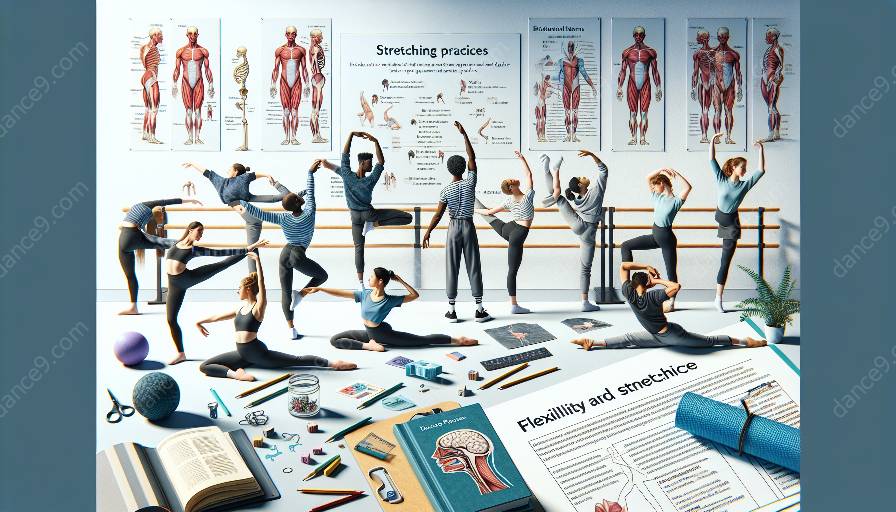Dancers require a high level of flexibility in their movements, which demands specialized training programs to enhance their physical and mental well-being. In this article, we will explore the essential aspects of designing a flexibility training program for dancers, while emphasizing the significance of flexibility and stretching in maintaining dancers' health.
Understanding the Importance of Flexibility and Stretching for Dancers
Flexibility and stretching play a crucial role in a dancer's performance and overall well-being. By improving flexibility, dancers can achieve a greater range of motion, increased movement efficiency, and reduced risk of injuries. Additionally, stretching contributes to the release of endorphins, promoting positive mental health and stress relief.
Key Considerations for Designing a Flexibility Training Program
- Assessment of Individual Needs: It is essential to assess each dancer's current level of flexibility and identify specific areas that require improvement. This assessment helps in tailoring the training program to individual needs and reducing the risk of overstretching or injuries.
- Gradual Progression: Flexibility training should follow a gradual progression to prevent strain or muscle damage. Initially, focusing on basic stretching exercises and gradually increasing intensity and complexity over time will ensure a safe and effective training process.
- Variety of Techniques: Incorporating a variety of stretching techniques, such as static, dynamic, and proprioceptive neuromuscular facilitation (PNF) stretching, helps in maximizing flexibility gains and preventing muscle adaptation to a single method.
- Integration with Dance Practice: Flexibility training should be seamlessly integrated with dancers' regular practice sessions. Including specific stretches that mimic dance movements can enhance flexibility while promoting muscle memory and coordination.
- Rest and Recovery: Allowing adequate time for rest and recovery is crucial in preventing overuse injuries and ensuring the body has time to adapt to the increased flexibility. Rest days and gentle stretching exercises are essential components of a well-rounded training program.
- Focus on Mental Well-being: Recognizing the connection between physical and mental health, flexibility training should incorporate mindfulness and relaxation techniques to promote mental well-being. Mindful stretching and breathing exercises can aid in reducing stress and improving overall mental health.
Benefits of a Well-designed Flexibility Training Program
A well-designed flexibility training program for dancers not only enhances their physical performance but also contributes to their mental and emotional well-being. Improved flexibility leads to better posture, alignment, and movement quality, enhancing the overall aesthetic appeal of dance performances. Furthermore, the emphasis on mental well-being through stretching and relaxation techniques helps dancers manage performance anxiety and stress, leading to a more fulfilling dance experience.
Conclusion
Designing an effective flexibility training program for dancers requires careful consideration of individual needs, gradual progression, variety of techniques, integration with dance practice, rest and recovery, and a focus on mental well-being. By addressing these key considerations, dancers can experience improved flexibility, reduced risk of injuries, enhanced performance, and better overall health, both physically and mentally.


































